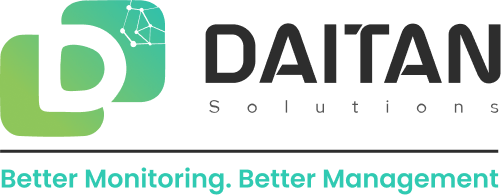© 2024 Ambsan All right reserved.
Textile Industry 4.0: Connecting OT and Smart Factories

Textile Industry 4.0: Connecting OT And Smart Factories
If you thought the textile industry was all about boring looms and drab assembly lines, think again. It’s time to revise your fashion forecast since the era of high-tech textiles has arrived and is walking down the digital runway.
We’re talking about the merging of Operations Technology (OT) and Smart Factories, a match made in textile heaven that’s transforming the industry into a high-tech haute couture affair.
So put on your imaginary overalls and prepare to be exceptionally engaged as we dive into the world of Textile Industry 4.0, where threads aren’t just for sewing, they’re for connecting, robots aren’t just for heavy lifting, they’re for heavy fashion.
The Data-Driven Approach: Improving Visibility and Control
Data management was often an exhausting and time-consuming process in the old textile manufacturing process. However, Industry 4.0 brings a new dimension: the data-driven approach. Textile companies may collect real-time data on many elements of the production process using a slew of sensors and IoT devices.
This information enables manufacturers to make informed decisions, optimize resource allocation, and precisely estimate maintenance needs. It’s like having a crystal ball that predicts the future of your manufacturing line.
Automation and Robotics: Streamlining Operations
Automation and robots are at the heart of Industry 4.0. These technologies are altering the game in the textile business. Automated looms, robotic material handling, and precise cutting tools are changing the way we make fabrics.
Automation not only boosts manufacturing speed and efficiency, but it also reduces human error. It’s as if a symphony of machines is playing in perfect unison to make textile masterpieces.
Human-Machine Interaction: Promoting Innovation
While automation and robotics improve precision and speed, human creativity and decision-making remain essential. Human-machine collaboration is encouraged in smart factories, where qualified personnel supervise and fine-tune automated operations.
They can concentrate on design, quality control, and complicated problem solving while machines execute monotonous jobs. It combines the precision of machines with the creativity of human minds.
Digital Twins in Textile Manufacturing: Virtual Reality Mirrors
Consider having a computerized mirror image of your textile production line in real time. That is what digital twins offer. Manufacturers can use virtual replicas to monitor, simulate, and debug processes without affecting actual production.
Digital twins ensure that your manufacturing runs at peak efficiency and assist in predicting and mitigating problems before they occur. It’s like having access to a textile production oracle.
Rigorous Software Testing:
It is one thing to assume what customers expect from a brand and quite another to know what users want when interacting with a mobile app. Mobile user testing aids in the optimization of mobile apps for a positive customer experience. Ensure that you use user analytics and A/B testing to identify key areas for a successful app launch. Make sure you can answer questions like, “What are the features that will make your app more valuable?” Is the user sign-up form simple to complete? As the world becomes more digital, customer expectations rise. As a result, businesses must up their game with the right mobile app testing strategy. The above tips can help with improving the customer experience for mobile app users.
Role of Operations Technology (OT) in Textile Manufacturing
Monitoring and Control in Real Time
Real-time monitoring and control have given fresh life to the textile industry. Manufacturers can now monitor every step of the manufacturing process using an array of sensors and data analytics. This implies real-time data regarding machine performance, temperature, humidity, and more.
It’s like having a textile symphony where the conductor adjusts each note as the song plays, assuring a harmonious and faultless production process.
Predictive Maintenance
Gone are the days of unexpected machinery malfunctions and costly downtime. Predictive maintenance employs the power of data and machine learning to estimate when a machine may require attention.
Instead of running a machine to failure, you now know when to replace parts, providing smooth and ongoing production. It’s like having a crystal ball that tells you, “Maintenance time is coming.”
Quality Assurance and Process Optimization
Quality is everything in the textile industry. OT enables producers to keep a close eye on quality throughout the manufacturing process.
Any violation from quality standards is met with prompt repercussions. It’s like a digital textile Sherlock Holmes, methodically inspecting every thread to ensure it matches the fashion detectives’ rigorous criteria.
Sustainability and Energy Management
Sustainability is the new black in the textile industry. Manufacturers can use OT to improve energy use and eliminate waste. By evaluating data, manufacturers can work more eco-consciously, ensuring that the environmental impact of textile production is kept to a minimum. It’s like turning a new page in the fashion book, where sustainability isn’t just a trend but a way of life.
Global Perspectives and Adoption Rates of Industry 4.0
The impact of Industry 4.0 on the textile manufacturing sector is not limited by geography. Different regions of the world have embraced these transformational technologies to differing degrees.
Industry 4.0 Initiatives in Europe
Europe has been in the forefront of Industry 4.0 activities, with a focus on smart manufacturing and sustainability. Germany, for example, has set the standard with advanced automation, robotics, and a significant emphasis on decreasing environmental effect.
To increase manufacturing efficiency and quality, European textile firms have used cutting-edge technology such as digital twins and IoT integration. It is an area where innovation meets history, resulting in a harmonic blend of the old and the new.
Smart Textile Manufacturing in North America
North America has enthusiastically embraced the digital revolution. Textile producers in the United States and Canada are leveraging the potential of automation and data analytics to streamline their processes.
The emphasis is on innovation, customisation, and the application of artificial intelligence to suit changing customer demands. The goal of smart textile manufacturing in North America is to stay ahead of the fashion curve.
Asia’s Textile Production Dominance
Asia, with industrial behemoths such as China, India, and Bangladesh, continues to dominate global textile output. The need for efficiency, cost-effectiveness, and expanding manufacturing to satisfy global demand is driving Industry 4.0 adoption in Asia.
While acceptance rates vary, there is a universal recognition of the significance of embracing smart technology in order to compete in the global market. It’s a place where tradition and technology collide on a huge scale.
Your Path to Unshakable Reliability
Here’s how our OT services help to secure your company:
Effective Access Control
Unauthorized access can cause interruptions, intellectual property theft, and even physical accidents. Our OT services use strict access controls, authentication, and permission mechanisms to ensure that only authorized individuals interact with your important processes.
Real-time Threat Detection
Our advanced OT services include real-time monitoring capabilities. We detect irregularities and potential security breaches in real time by leveraging sensors, cameras, and advanced analytics.
This vigilance enables your company to respond quickly to risk mitigation, ensuring that your activities stay secure and uninterrupted.
Best Cybersecurity Practices:
We are committed to establishing and promoting cybersecurity best practices. To protect your critical data, we constantly update software and firmware to patch vulnerabilities, provide extensive personnel training, and use encryption measures.
Conclusion:
You can confidently navigate the growing technology landscape if you embrace the newest in OT security. Don’t leave your company’s security up to chance.
Contact us today to learn more about how our OT services can give your organization strong security, dependability, and peace of mind. We are here to secure your business and future.
FAQs
What is Industry 4.0 in the context of the textile industry?
It encompasses concepts such as IoT (Internet of Things), automation, data analytics, and artificial intelligence. It strives to update and improve production processes in the textile sector.
What is the role of OT (Operational Technology) in the textile industry’s digital transformation?
OT refers to the hardware and software that control and monitor physical processes, such as machinery and equipment in textile mills. Integration of OT with IT (Information Technology) is critical for Industry 4.0 in the textile industry since it allows for real-time data collecting, analysis, and decision-making.
What benefits does the integration of OT bring to the textile industry?
The integration of OT and smart factories in the textile sector provides benefits such as better productivity, lower operational costs, improved product quality, more sustainability, and increased agility to adapt to market needs.


